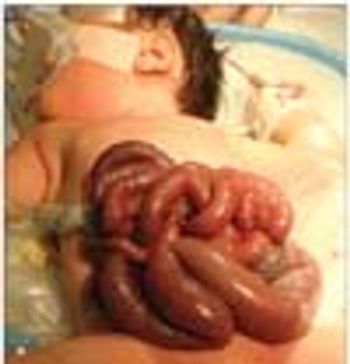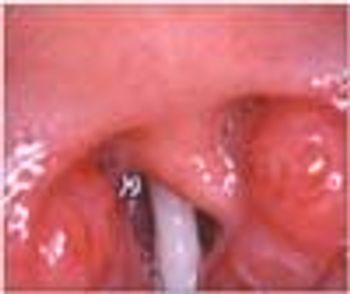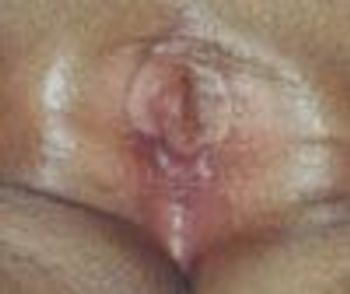
AAIDDAmerican Association on Intellectual and Developmental Disabilities APSE Association for Persons in Supported EmploymentAUCDAssociation of University Centers on DisabilitiesASAAutism Society of America

AAIDDAmerican Association on Intellectual and Developmental Disabilities APSE Association for Persons in Supported EmploymentAUCDAssociation of University Centers on DisabilitiesASAAutism Society of America

Newborn Screening : Guiding parents through the diagnostic maze Ultrasonography : Expanding bedside applications in the pediatric emergency department settings Dermcase : Little brown bumps on face distress a young man Puzzler : Rare cause of flank pain in teenaged girl Updates : Rescue Albuterol for Asthma, Heart screening, Healthy people 2020, FDA updates heart, respiratory rates for children

Most children should remain in rear-facing car safety seats (CSS) until age 2 years, according to a new American Academy of Pediatrics (AAP) policy statement.

Atomoxetine is well tolerated and reduces core attention-deficit/hyperactivity disorder (ADHD) symptoms in preschool children, according to a study reported in Pediatrics.

The use of fennel extract, certain mixed herbal teas, and sugar solutions appear to lessen symptoms of infantile colic (IC), but studies of these complementary and alternative therapies have major limitations, according to a study published in Pediatrics.

The American Academy of Pediatrics (AAP) is endorsing the recommendation of the Advisory Committee on Immunization Practices (ACIP) of the Centers for Disease Control and Prevention that reduces the number of human diploid cell vaccine or purified chick embryo cell vaccine doses from 5 to 4 for postexposure prophylaxis (PEP) for the prevention of rabies.

Adolescents who undergo bariatric surgery lose bone in the first 2 years after surgery, but their bone mineral density (BMD) does not fall below average for their gender and age, according to a report published in Pediatrics.

Eradicating asymptomatic Helicobacter pylori infection in children without iron deficiency does not change iron stores, according to the results of a double-blind randomized trial appearing in the March issue of the Journal of Pediatric Gastroenterology and Nutrition.

The US Food and Drug Administration has notified health care practitioners that severe, possibly fatal, health problems have been reported in babies who have received lopinavir/ritonavir oral solution.

To assess whether a combination of inhaled beclomethasone plus albuterol could be used as a rescue medication regimen to reduce the frequency of exacerbations, whether the patient also used daily beclomethasone, investigators conducted a trial.

The topic of sexuality is a sensitive one, leading to many parents shying away from its discussion until there's no avoiding the discussion at puberty.

Based on an increase in numbers of cases of diabetes and myocardial infarction in the pediatri population, expect to see more erectile dysfunction at unimaginable ages.

Bedside emergency ultrasonography has become a valuable tool for emergency physicians.

Daily treatment with magnesium oxide increases serum magesium levels in children with functional constipation but not to a critical extent.

The number of conditions detected by newborn screening has grown dramatically in recent years.

New evidence-based reference ranges for heart and respiratory rates in children show substantial disagreement with existing consensus-based international guidelines.

An otherwise healthy 15-year-old boy complains of an increasing number of bumps on his face over the last 3 years.

A 15-year-old girl has pain in her right flank.

Imiquimod 3.75% cream has been approved by the FDA for the topical treatment of external genital and perianal warts in patients aged 12 years and older.

The Institute of Medicine committee recently recommended 24 objectives for priority in the coming decade.

A new study examines the efficacy of a new hypotonic oral rehydration solution containing zinc plus the prebiotics fructooligosaccharides and xilooligosaccharides in treating children with acute diarrhea.

The FDA has approved rufinamide oral suspension 40 mg/mL as an adjunctive treatment for seizures associated with Lennox-Gastaut syndrome.

Low-cost focused cardiac screening that incorporates an electrocardiogram can be highly effective at diagnosing cardiac conditions in children.

Investigators developed two "decision trees" to stratify the risk of children being evaluated for intussusception.

Quality improvement is a concept that has benefited by being named.

A 15-year-old boy presents with pain in the medial aspect of his right elbow that began 4 to 6 weeks earlier and progressively worsened.

A 3-year-old girl was hospitalized because of purulent drainage from a right middle finger wound (Figure 1) and a tender right axillary mass (Figure 2) of 2 days’ duration.

This baby girl was born at 37 weeks' gestation via cesarean section, with the stomach, small bowel, proximal colon, and ovary outside the body

This picture shows an unusual linear white object positioned vertically at the center of the posterior pharynx of a 5-year-old girl’s throat.

The mother of this 11-month-old girl was concerned that her infant’s vagina was almost obscured by a membrane. This was noted incidentally a few days earlier.